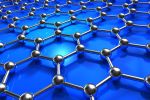EPJ B - Towards high-temperature superconductors
- Details
- Published on 10 August 2012

Scientists produce a new type of superconductor by manipulating graphene, the study of which led to a Nobel Prize
Chinese scientists have manipulated the charge and the degree of freedom, known as spin, of electrons and their associated magnetic properties in a single-layer carbon material called graphene, making it suitable for applications involving superconductivity, a quantum mechanical phenomenon in which electrons travel in a material with no electrical resistance. These findings have recently been published in an article in EPJB by Chunxu Bai from Anyang Normal University and colleagues from the Henan Institute of Science and Technology in Xinxiang.
The authors investigated the means of exploiting a superconducting graphene flake. They looked at how unconventional electron pairing – known as d-wave pairing symmetries – would affect coherent subatomic – i.e., quantum – level transport within the material. In particular, they focused on electrical conductance in a system called a spin valve, which consists of two conducting magnetic materials, including a normal metal and graphene superconductor, the electrical resistance of which alternates from so-called giant magnetic resistance to none, depending on the alignment of its magnetic layers.
By reversing the magnetisation direction of one of the layers of the valve, researchers found that it is possible to achieve a spin-switch effect, whereby a normal current is converted into a superconducting current. The authors also found that the spin-switch effect is sensitive to the incident energy level and the orientation of the material’s superconducting gap.
The authors hope that their theoretical results can provide the basis to design a spin-switch electron device able to operate at so-called high temperature, where liquid nitrogen can be used as a refrigerant at 77 Kelvins (-196 °C) instead of the liquid helium (-269 °C) traditionally used in conventional superconductors. This approach opens doors for the wider use of an all-graphene spin-switch circuit in quantum information applications in the future.
Spin-switch effect in a graphene d-wave superconductor spin valve.
C. Bai, J. Wang, H. Tang, and Y. Yang, Eur. Phys. J. B (2011) 84, 1, DOI 10.1140/epjb/e2011-20507-1




